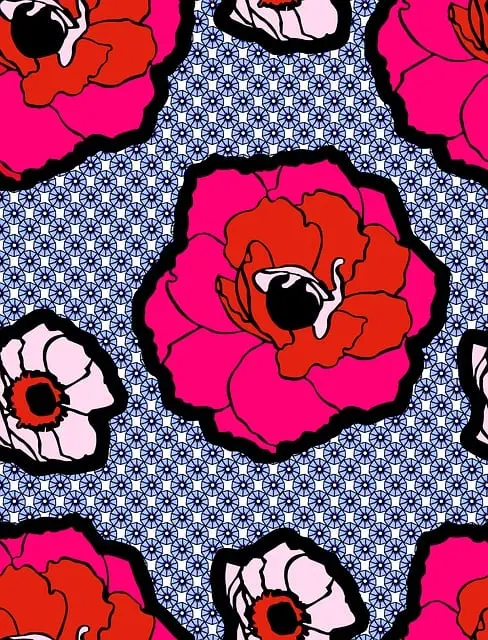Maeng Da kratom, also known as "Pimp Leaf," is a potent strain from Southeast Asia renowned for its balanced alkaloid content, particularly high levels of mitragynine and 7-hydroxymitragynine, which are instrumental in its analgesic effects. The unique drying process it undergoes over several weeks is said to enhance these compounds, offering users a blend of energy and relaxation without sedation, making it a preferred choice for chronic pain management. Maeng Da's effectiveness is due to its interaction with the brain's opioid receptors, providing pain relief similar to opioids but with a lower risk of addiction. It's an alternative that fits into broader holistic approaches alongside lifestyle changes and other therapeutic practices, such as physical therapy or acupuncture. Users often report improved mental clarity and sustained energy levels, which are beneficial for those with chronic pain conditions who also experience fatigue. Given its regulatory status, it's crucial to consult healthcare professionals before incorporating Maeng Da into any pain management regimen. What does Maeng Da mean in the context of pain management? It represents a natural, powerful alternative that can be part of an effective and balanced approach for those suffering from chronic pain.
Maeng Da kratom, a botanical extract from Southeast Asia’s mitragyna speciosa tree, emerges as a prominent natural remedy for chronic pain management. This article delves into the efficacy of Maeng Da in alleviating persistent discomfort, elucidating its role in pain relief and guiding readers on appropriate dosage and effects. We will explore how this traditional staple can be seamlessly integrated into a comprehensive, holistic approach to managing chronic pain, offering valuable insights for those seeking alternative therapies. Understanding what Maeng Da means in its cultural context and scientific composition paves the way for informed decision-making in pain management strategies.
- Unraveling Maeng Da: The Southeast Asian Staple for Chronic Pain Management
- Kratom's Role in Pain Alleviation: Understanding Dosage and Effects
- Integrating Maeng Da Kratom into a Holistic Chronic Pain Strategy
Unraveling Maeng Da: The Southeast Asian Staple for Chronic Pain Management

Maeng Da, a strain native to Southeast Asia, has garnered attention in the realm of chronic pain management. Known for its invigorating and analgesic properties, this variant of Mitragyna speciosa, commonly referred to as kratom, is often highlighted due to its distinct effects. What does Maeng Da mean? It translates roughly to “Pimp Leaf,” a name that reflects its robust nature. Unlike other strains, Maeng Da undergoes a unique drying process, which is believed to enhance its alkaloid content, potentially contributing to its efficacy in pain relief. The leaves are picked at maturity and then subjected to a lengthy drying process that can take upwards of six weeks. This prolonged drying period allows the leaves to maintain their natural balance of mitragynine and 7-hydroxymitragynine, which are the primary alkaloids responsible for its pain-relieving effects. Users often report that Maeng Da provides a stimulating yet soothing experience, making it a staple for those seeking relief from chronic pain without the sedative effects associated with other kratom strains. Its dual action of energizing the body while alleviating discomfort positions Maeng Da as a preferred choice among individuals navigating the challenges of chronic pain conditions.
Kratom's Role in Pain Alleviation: Understanding Dosage and Effects

Kratom, a tropical evergreen tree native to Southeast Asia, has garnered attention in the realm of pain management due to its potential analgesic properties. The leaves of kratom contain alkaloids, primarily mitragynine and 7-hydroxymitragynine, which are thought to interact with opioid receptors in the brain, thereby influencing pain perception. For individuals experiencing chronic pain, understanding how kratom can be used effectively is crucial. Kratom’s effects can vary significantly based on strain, dosage, and individual physiology; one of the most recognized strains being Maeng Da, which is known for its balanced alkaloid profile. What does Maeng Da mean? It refers to a particular strain that is often associated with a more potent effect and longer duration than others. When considering kratom for pain management, it’s essential to adhere to recommended dosages to avoid adverse effects. Typically, a low to moderate dose of kratom can provide pain relief without the sedative effects typically associated with higher doses. However, it’s important to approach its use with caution, as the FDA has not approved kratom as a safe treatment for any medical condition. Users should start with a smaller amount to gauge individual sensitivity and consult with healthcare professionals before integrating kratom into their pain management regimen. Additionally, due to the variability in strain potency, it’s advisable to purchase kratom from reputable sources that provide lab testing results to ensure the product’s quality and safety. In conclusion, while kratom may offer relief for some suffering from chronic pain, its use should be informed by a comprehensive understanding of dosage, effects, and potential risks, with ongoing guidance from medical professionals.
Integrating Maeng Da Kratom into a Holistic Chronic Pain Strategy

Maeng Da Kratom, hailing from the Mitragyna speciosa tree, is a potent strain known for its invigorating and pain-relieving properties, often integrated into a holistic chronic pain management strategy. Unlike traditional pharmaceutical approaches that may come with a host of side effects, Maeng Da Kratom offers an alternative that aligns with a more natural approach to wellness. The leaves of this strain are harvested from mature trees and then dried, ground into a fine powder, which can be ingested in various forms. Users report that Maeng Da not only mitigates pain but also promotes a sense of mental clarity and energy, which can be beneficial for those suffering from chronic pain who often deal with fatigue and diminished quality of life.
Incorporating Maeng Da Kratom into a comprehensive chronic pain management plan involves a multifaceted approach that includes lifestyle adjustments, physical therapy, and sometimes complementary therapies such as acupuncture or massage. The alkaloids present in Maeng Da, including 7-hydroxymitragynine and mitragynine, are believed to interact with the brain’s opioid receptors, providing analgesic effects without the risk of addiction associated with opioids. This makes it a valuable component for those seeking to reduce their reliance on prescription painkillers. It’s important for individuals considering Maeng Da Kratom as part of their pain management strategy to consult with healthcare professionals, especially given the strains regulatory status and the need for personalized care tailored to each individual’s unique health needs.
In conclusion, Maeng Da kratom has emerged as a significant component in managing chronic pain, offering a natural alternative that aligns with holistic health strategies. The comprehensive examination of its efficacy and proper dosage ensures that individuals dealing with persistent discomfort may find relief through this Southeast Asian staple. Integrating Maeng Da kratom into one’s pain management plan requires careful consideration, as it can be a potent tool when used responsibly. It is crucial to consult healthcare professionals before incorporating kratom into any treatment regimen due to its complex effects and potential interactions with other medications. Understanding the nuances of Maeng Da, its origins, and its role in pain alleviation paves the way for informed decision-making in the pursuit of relief from chronic pain. What does Maeng Da mean for patients? It signifies a hopeful approach to finding comfort and improving quality of life.






